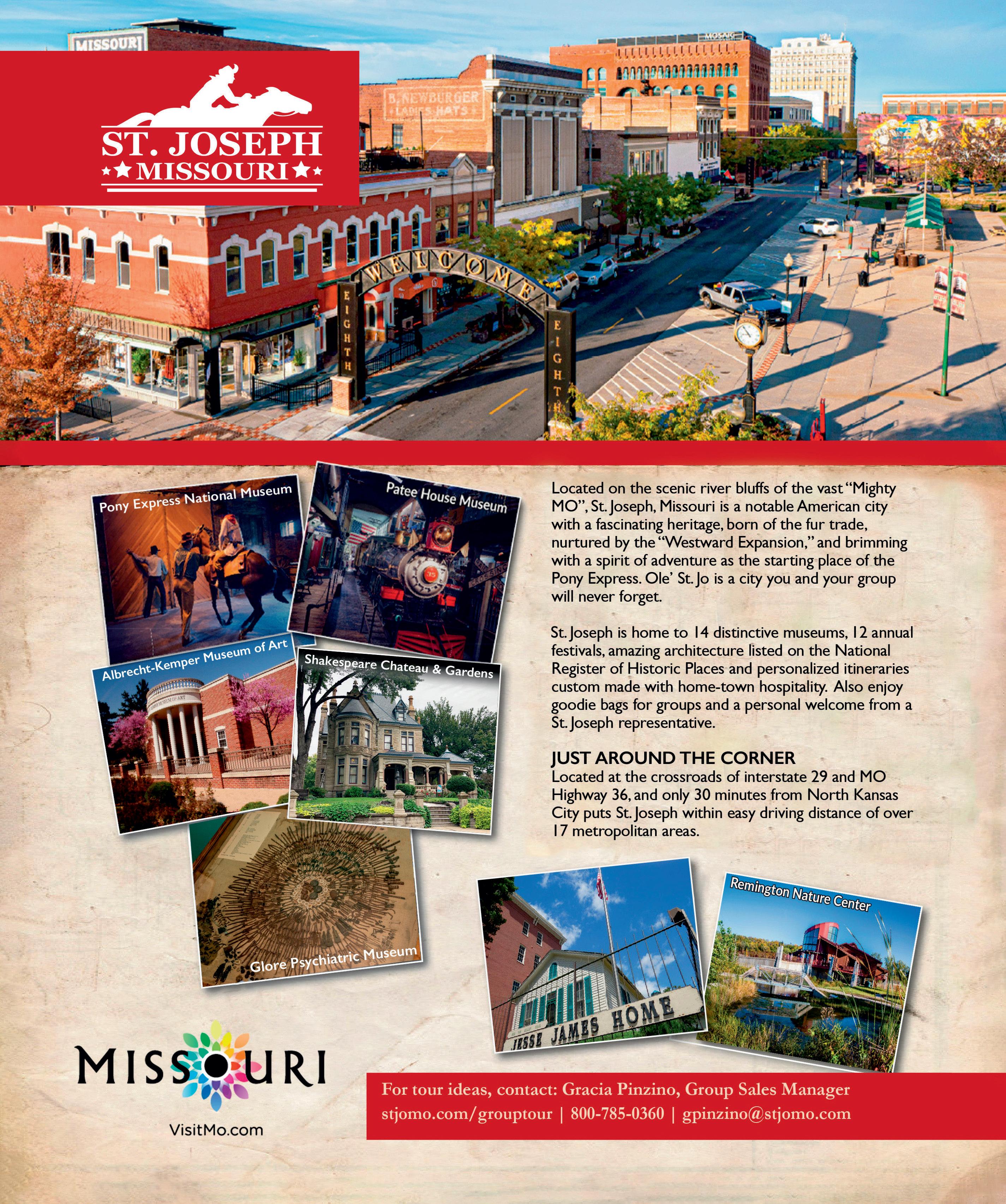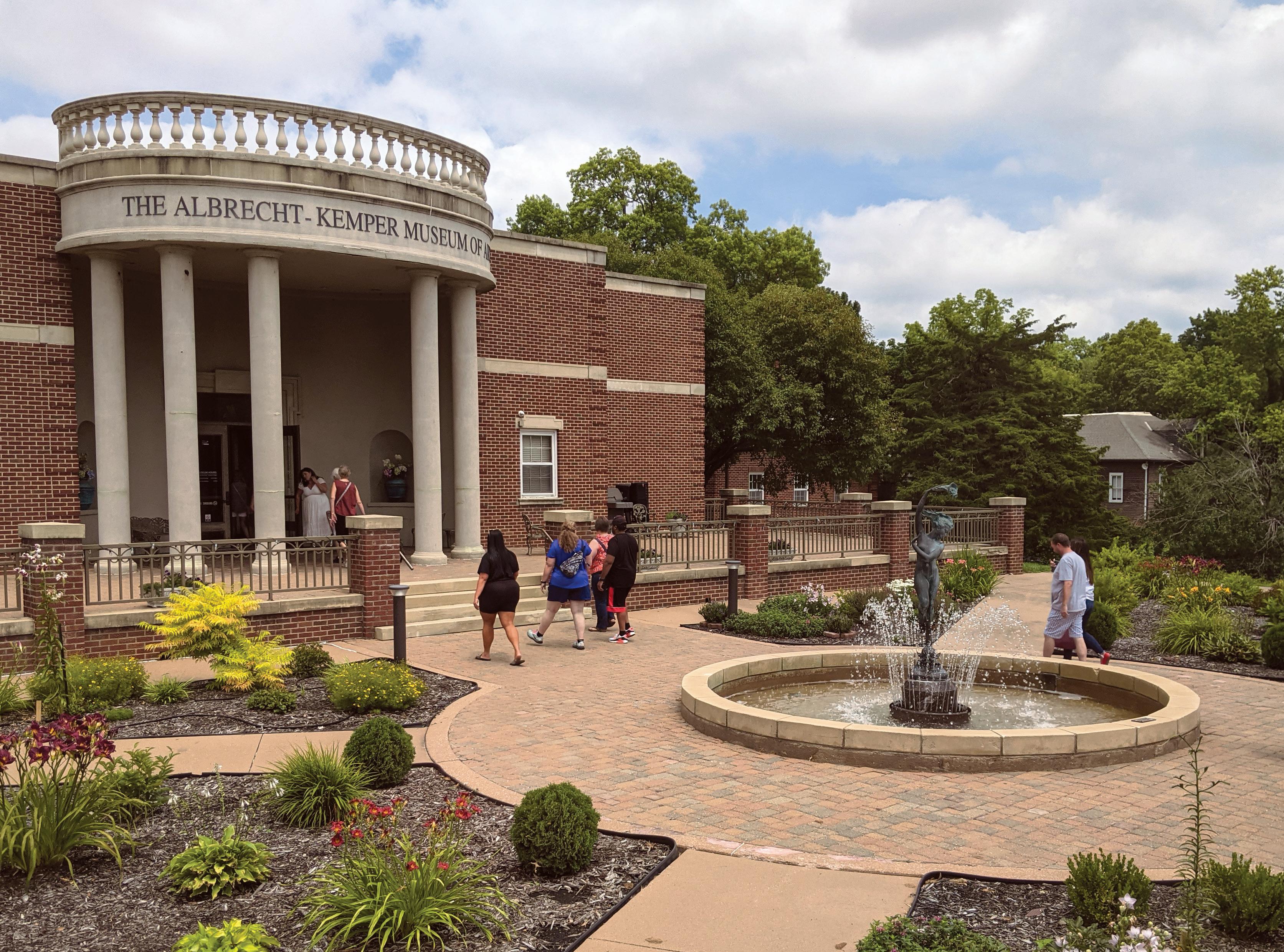
3 minute read
The Real Deal
ST. JOSEPH ILLUSTRATES THE AUTHENTIC WEST
BY ELIZABETH HEY
Legend and lore intertwine in St. Joseph, Missouri. Named a top 10 Western Town by True West magazine some years ago, St. Joe’s cast of outlaws and upstanding citizens has created an intriguing past and present.
Jesse James and the Pony Express riders made their mark here. Contemporary personalities and prominent businessmen have roles in the city’s colorful story, recounted in today’s museums and sites on the Missouri River.
Pony Express National Museum
More than 150 years ago, the Pony Express established its headquarters in this pioneer town. For those interested in westward expansion, the Pony Express National Museum tells the story of the system that connected the West to the rest of the country before the telegraph was invented, preserving the history of a communications network that lasted 18 months in the 1860s. A map of the route highlights different stops. Groups can stay for lunch and entertainment by reenactor Miss Lizzy. Next door, the Goetz family, who helped established the Pony Express National Museum, created the Goetz Museum and 1923 Pony Bar, which preserves the area’s German-American story in a restored barn.
“The museum is believed to be at the location of the original Pony Express stable, and the museum’s director does a great job retelling their story.” said Christian Mengel, director of communications and marketing for the St. Joseph Visitors Bureau. “Visitors can see where the Pony Express began and Jesse James died, all within two blocks.”
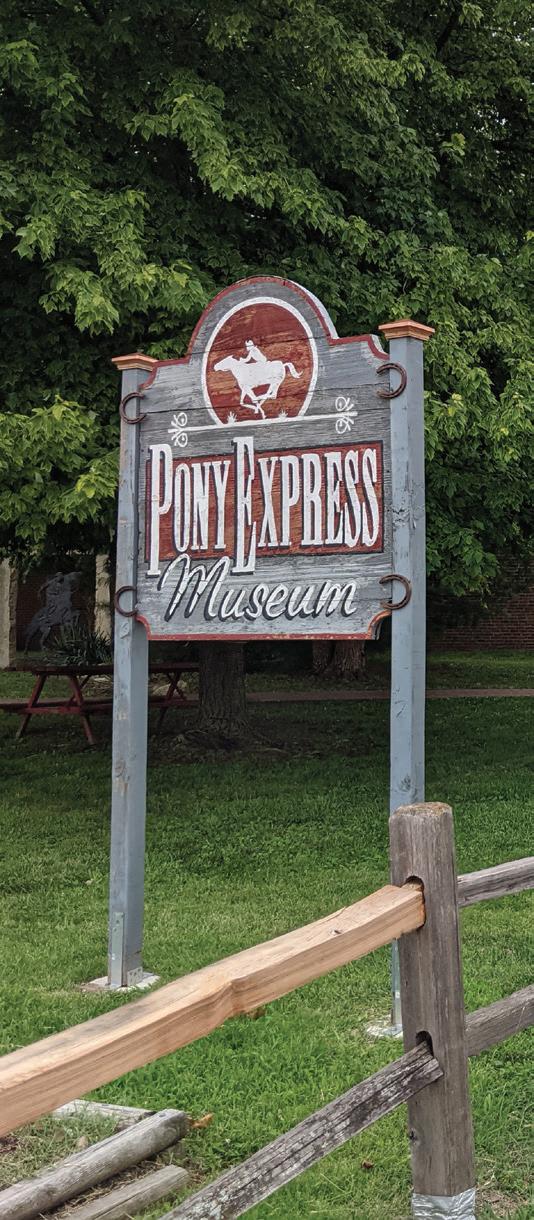
The Patee House Museum
The Patee House opened in 1858 as a luxurious four-story brick hotel. It served as a stagecoach stop and Pony Express headquarters. Today, the National Historical Landmark is a museum that pays homage to Western history.
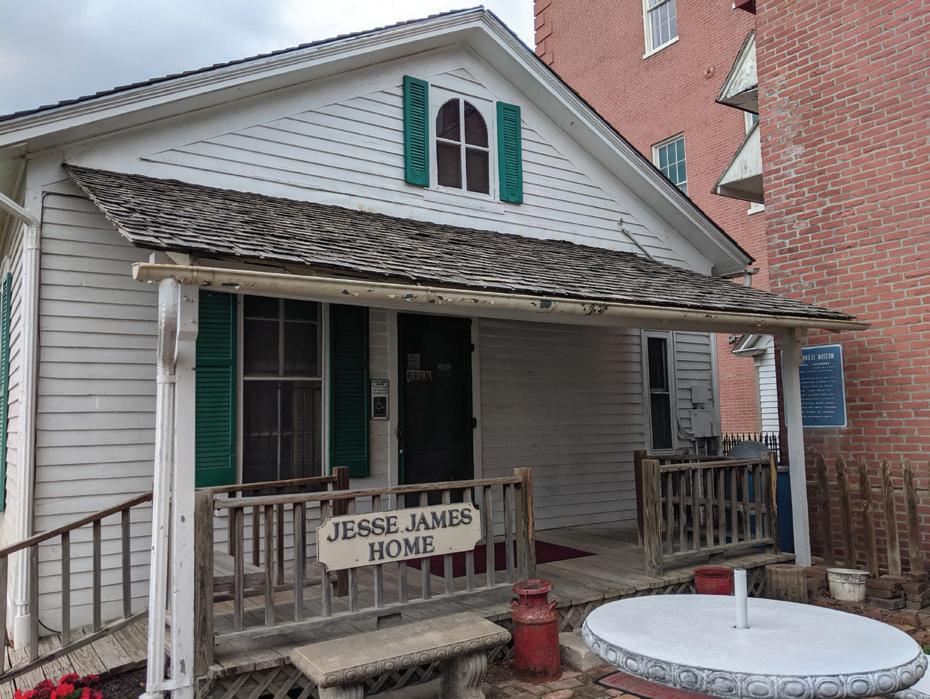
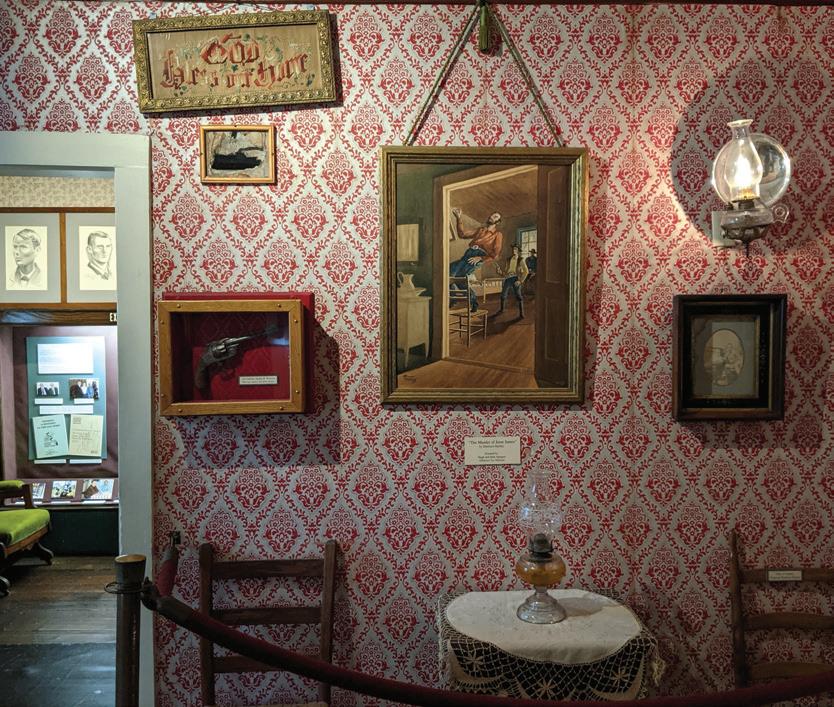
“Visitors are always impressed with the size and memorabilia contained in this museum,” said Mengel. “People can easily spend two full days here if they want to read and see everything.”

A 1920s-style service station in the museum showcases a Model T Ford. Visitors can climb aboard the last locomotive to ride the Hannibal-St. Joseph railway and view the 1870 Union Star depot. The Buffalo Saloon serves sarsaparilla and popcorn. Recreated Main Street includes Walter Cronkite’s father’s dentist office, a 1941 handcarved, hand-painted working carousel and the Buchanan County jail gallows. Also on display is George Warfel’s “Westerners on Wood,” a collection of more than 40 lifesize portraits of famous Old West personalities including Jesse and Frank James.

Infamous Jesse James
Jesse James’ was assassinated in 1882 in his hillside home at 1318 Lafayette Street — a spot James picked out where he could be aware of anyone approaching. Living under an alias, his children had no idea of his notorious past. On that auspicious day, James was adjusting a picture inside his house when Bob Ford took aim. The bullet hole in the James’ wall commemorates the fateful moment.
At the time of his death, the home stood two blocks north of its current location, and a monument marks the site. Visitors can tour the home, which has been moved directly behind the Patee House Museum. James’ widow and two children stayed at the Patee House hotel for several nights after his death.
Robidoux Row Museum
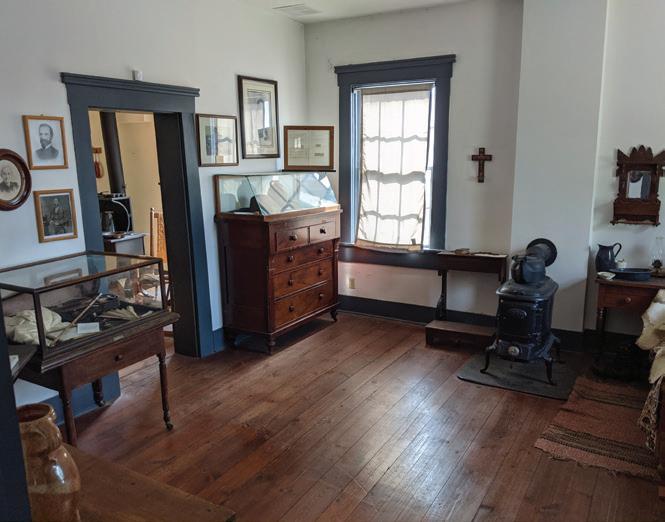
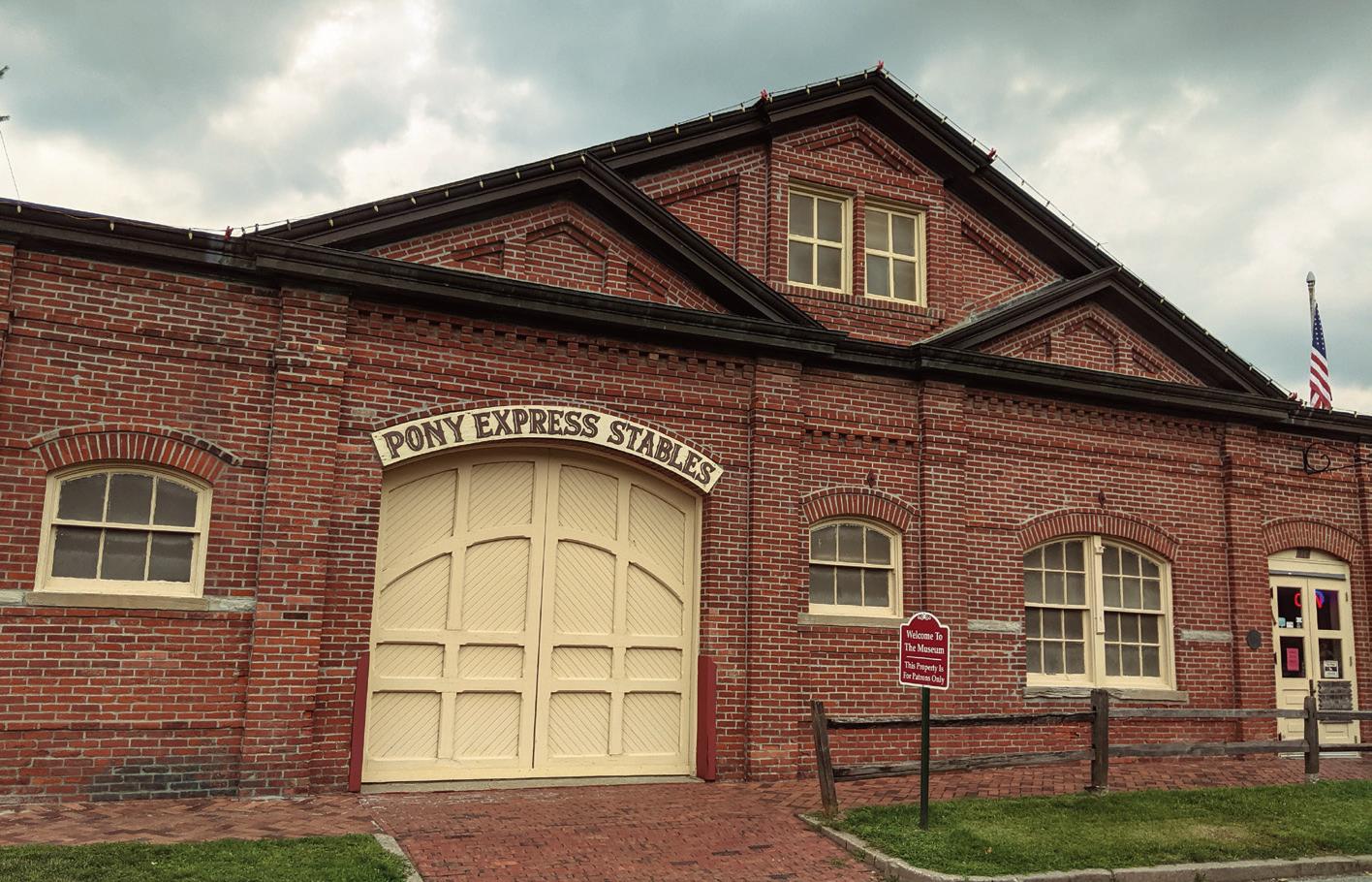
Robidoux Row Museum makes an excellent starting point for history tours. Fur trader Joseph Robidoux founded St. Joseph and in the 1850s, he built seven connecting row houses to serve as temporary homes for new settlers. Robidoux lived here for about 10 years until his death in 1868. The four houses that survived have been restored, and one includes Robidoux’s personal quarters and some of his possessions, period furniture and a replicated wintering room for a pioneer family.
Art Commemorating The Past

Located in the Albrecht family home and built by the founder of the Western Tablet Company, maker of Big Chief tablets, the Albrecht-Kemper Museum of Art recounts the American experience through art. Its notable collection of 18th, 19th and 20th-century pieces include portraits by Gilbert Stuart and landscapes by Albert Bierstadt and Edward Hopper. There’s also a first edition of George Catlin’s “North American Indian Portfolio,” published in 1844.
The Albrechts’ 1935 Georgian mansion was one of the nation’s first to incorporate central air, an underground sprinkler system, Formica counters and automatic garage doors. Group tours of the home can include a catered lunch in the café; programs can be held in various rooms, including a 144-seat auditorium.
“It’s a modern art museum and historic house rolled into one,” said Mengel. “The Bradley art library and speakeasy is original to the home and a spot people really enjoy.”

